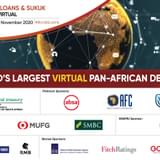It is looking increasingly likely that South Africa will be facing a credit rating downgrade to junk status in December, something that the international markets appear to be pricing in to assets. While the country’s foreign currency debt ratings are most at risk to any upcoming action, South Africa’s local currency ratings should remain safe if the necessary reforms can be implemented over the next two years.
“A downgrade is now a kind of fait accompli. It is going to happen, but it is just a question of when exactly. The country avoided a downgrade in June, but the writing is pretty much on the wall for December.”
The rand currently stands at 14.1812 to the US dollar, data from Bloomberg shows, whilst 10-year government bonds have been trading at around 8.67%, according to Trading Economics.
According to CNBC Africa, a median response from 16 economists predicts that the rand would lose about 7.5% against the US dollar and that 10-year government bond yields would rise by 50bp following a downgrade to junk.
Although a credit rating downgrade to junk status will affect South African markets negatively we could see a brief rally immediately after the event, following evidence from credit downgrades to junk status in Russia and Brazil.
“It is likely that bond yields will start rising and the rand will begin weakening towards December, which is when the markets are expecting the sovereign to be downgraded, and then on the downgrade there will likely be a ‘relief rally’.”
Furthermore, the large demand for EM debt on low or negative interest rates elsewhere means that to a certain extent some sub-investment grade exposure would be allowed. “It is really just about pricing.”
South Africa’s foreign currency ratings are in the most danger or being downgraded, with S&P Global Ratings looking the most likely to act first, the local currency ratings are the more important for the country.
It is important for South Africa to remain investment grade on the local currency ratings, as most investments in the country are conducted in rand. If this is dropped to sub-investment level by two of the main rating’s agencies, the country will fall out of the large government bond indices.
In July Fitch cut South Africa’s local currency credit rating to the lowest investment grade level at BBB-. The outlook was kept at stable.
The credit investor noted that the outlook was growing bleak.
“If a local currency downgrade to junk does happen there will be a large exodus out of government bonds, which will really impact yields on the local currency side,” they said, adding that the December action was not likely to lead to such a situation just yet.
“South Africa may however get there in a couple of years’ time if the necessary reforms are not implemented to try to stop the downward trajectory of the rating actions.”
The credit investor also noted that it is unlikely that the sovereign would look to tap the markets before the threat of any possible downgrade in December to secure any last-minute ‘cheap’ debt. The country’s debt to GDP ratio is already at the top end given its current rating, so the problem would likely only be exacerbated by tapping the offshore markets with foreign currency denominated government bonds. South African government debt to GDP stood at 50.10% of GDP in 2015 according to Trading Economics.









